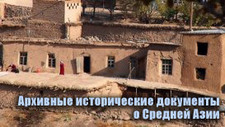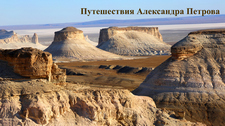You are here
Artist Pavel Kosharov.
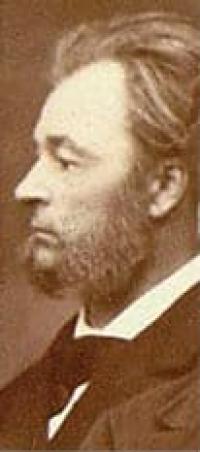
Trip from Charyn Canyon to Lake Kolsay.
"He was a most sympathetic representative of the good old days, an artist and a person, the likes of which are becoming rare these days."
Newspaper "Siberian Life". September 26, 1902.
"The artist P. M. Kosharov rendered an invaluable service to my expedition; much that cannot be conveyed in words, but only by drawing, would have been lost to me without Kosharov's accompaniment"
Semenov Tyan-Shansky. Newspaper "Siberian Life".
"And just as Russian science is indebted to Semenov-Tyan-Shansky for the first geographical description of the hitherto unknown Tien Shan, it should also be indebted to Kosharov for the first detailed ethnographic album that captured the monuments of Kyrgyz culture and life"...
S. M. Abramzon.
Trip from Almaty to Jety-Oguz Gorge.
The first Russian artist to visit Tien-Shan was Pavel Mikhailovich Kosharov (1824 - 1902). A boy from the family of servants of Prince Golitsyn, who early showed an aptitude for drawing, after three years of study at the St. Petersburg Academy of Arts was awarded the title of teacher of drawing.
The fate of this artist was similar to the fates of many talented people in Russia in the first half of the 19th century. Pavel Mikhailovich Kosharov was born in 1824 in the village of Ivanovskoye, Pokrovsky district, Vladimir province, into the family of a servant of the princes Golitsyn. His early love and talent for drawing were noticed by Anna Alexandrovna Golitsyna.
By order of the princess, in 1839 the talented teenager was issued a special "leave document". It seems that later - during his preparation for admission to the Academy of Arts, as well as during his years of study at the Academy - the princess supported the aspiring artist financially.
So, in 1840, sixteen-year-old Pavel Kosharov submitted a petition to the St. Petersburg Academy of Arts to accept him as a "free" student. The drawings he presented from originals and busts were positively assessed by the Council of the Academy, and he was enrolled in the drawing class.
After completing a three-year course of study here, Kosharov received the right to attend art classes taught by the famous artist and professor K.P. Bryullov. The young man also attended courses in auxiliary sciences, the theory of fine art, linear perspective, drawing orders, and anatomy.
On January 22, 1846, he was awarded the title of drawing teacher, which meant that he could now teach drawing and drafting in gymnasiums. Due to his difficult financial situation, Kosharov asked to be sent to work at the Simferopol gymnasium.
According to some sources, he left for Crimea together with Count A.S. Uvarov, a famous archaeologist who was conducting excavations there. There is information that, while working at the Simferopol gymnasium, Pavel simultaneously improved his skills in the studio of the marine artist I.K. Aivazovsky.
In October 1848, for the paintings and sketches presented to the Council of the Academy of Arts, he received a certificate confirming his title of "not a class artist." Soon he was transferred to the St. Petersburg Voznesensky School in order to have the opportunity to further improve his skills.
In 1854, a decisive turning point in Kosharov's fate occurred - he was appointed to work in Tomsk, and from that moment on his life and work would be inextricably linked with Siberia. Kosharov began his career in Tomsk as a drawing and drafting teacher at a boys' gymnasium.
His arrival in the city did not go unnoticed. Thus, in the same year of 1854, the Decembrist G.S. Batenkov, who was serving his exile in Tomsk, wrote in one of his letters to A.P. Elagina: "... in the city there is only a landscape painter among the drawing teachers", meaning Kosharov.
The memories of former students of the gymnasium about him are interesting, and among them was the outstanding Siberian journalist and public figure N.M. Drintsev. Describing the types of teachers, many of whom caricatured the image of a teacher with their behavior, he remembers Kosharov with warmth and love.
“He never lost his temper, never persecuted, and responded to the most violent outbursts with a gentle smile and a slight reproach: “Ah, gentlemen, gentlemen!” Nevertheless, less he developed in many a passion for drawing, he himself was a diligent artist.
The kindness of such people conquered us faster and better than any executions, kicks and shouts "on your knees". It seems to me that natural softness, patience and tenderness of heart should certainly be the property of a teacher, children instinctively distinguish a good nature from an evil one.
"Siberian writer N.I. Naumov, who also graduated from the Tomsk gymnasium, recalled: ".. always friendly and affectionate, he patiently, lovingly explained to each student what was required... Drawing class was a holiday for us, and everyone tried to earn praise and a kind smile from Kosharov during the break."
Already in the summer of 1856, Kosharov was assigned as a draftsman to a mountain expedition in Altai, from where he brought back two picturesque landscapes and a large folder of drawings, which he then compiled into an ethnographic album. Judging by these drawings, the expedition explored Lake Teletskoye, Rudny Altai, the Charysh River basin with its tributaries Bolshoi and Maly Korgon.
The picturesque landscapes were presented by him at an academic exhibition in St. Petersburg. At the beginning of 1857, Kosharov received an invitation from the traveler and geographer P.P. Semenov to take part in his expedition in Tien Shan as an artist.
The scientist attached great importance to artistic sketching of landscapes. Their meeting took place in Semipalatinsk. The journey lasted a little over three months. From the very first days, Kosharov joined the expedition, making picturesque sketches of the area, portraits of local residents, drawings of historical monuments, their household items and clothing.
Semenov calls him nothing less than "my faithful companion, a respected artist." "Much that cannot be conveyed in words, but only by drawing, would have been lost to me without Kosharov's accompaniment," he writes. The two talented people complement their observations with individual artistic expressiveness.
One, in his notes, colorfully and figuratively reproduces the unique features of the area in beautiful Russian, the other no less talentedly depicts them in drawings and watercolors. Throughout the expedition to Tien-Shan, Kosharov was close to Semenov and shared, as the famous traveler later wrote, "with rare selflessness all the difficulties, hardships and dangers of the journey...
He was tireless in capturing views, especially since the wild, majestic, often terrifying nature of this center of Asia could not help but awaken full energy in the soul of anyone who is capable of sympathizing with the beauty of nature." During the expedition to Tien-Shan, the artist created, in Semenov's words, "a select collection of the most remarkable landscapes," as well as a whole series of drawings of household utensils and clothing of the Kirghiz, scenes from their life and everyday life of that distant time.
In 1860, the artist organized a small exhibition of his paintings in Tomsk, and, according to art historians, this was the first art exhibition in Siberia. Today, works from Kosharov's Tien-Shan series are in Tomsk museums, and many drawings are in the archives of the Russian Geographical Society.
The collections of the Peter the Great Museum of Anthropology and Ethnography of the Russian Academy of Sciences in St. Petersburg contain the "Ethnographic Album of the Wild-stone Kyrgyz of the Bogintsy Tribe with a Map Drawn from Life by the Artist Kosharov during Semenov's Scientific Expedition in 1857."
The album's sections present ethnographic sketches, clothing, utensils, weapons, and views of the area. The superb landscapes of the Central Tien Shan are accompanied by small author's notes placed under the drawings. This artist has been completely unreasonably and undeservedly forgotten in Kazakhstan.
Meanwhile, Kosharov's significance in geographical and ethnographic terms is difficult to overestimate. Usually, when his name is mentioned, only the first view of the Verny fortification and portraits of Kyrgyz and Kazakh hierarchs reproduced in the memoirs of Semenov-Tyan-Shansky are recalled.
But in the museums and archives of St. Petersburg, Kyiv, Moscow and Tomsk there are expedition albums and paintings that are practically unknown even to local historians. Thanks to the efforts of the scientist Abramzon, the "Ethnographic Album of the Wild-stone Kirghiz of the Bogin Tribe" with drawings by Kosharov was published back in 1953.
Pyotr Petrovich Semenov (1827 - 1914) was actually the first European who managed to penetrate into the depths of the Tien Shan: to explore its ridges, climb the slopes of the Khan-Tengri mountain range with its vast group of glaciers, study Lake Issyk-Kul, see and comprehend the diversity of flora and fauna of Central Asia.
The 1857 journey became a significant milestone in the history of the study of this region, laying the foundations for subsequent expeditions by N. M. Przhevalsky, V. I. Roborovsky, G. N. Potanin and many other researchers. Today, an idea of this journey would be incomplete without the drawings. He created, in the words of Semenov, "a select collection of the most remarkable landscapes."
The drawings depict the places visited by the travelers. These are the cities of Ayaguz and Kopal, the warm spring of Arasan, the fortification of Vernoye, lakes (Balkhash, Issyk-Kul), rivers (Chilik, Kungey-Alatau. In addition to landscapes, the album presents so-called "types" - portraits of Kalmyks, Kirghiz, Tatars, whom Semenov met on his way, and sketches with household items.
Among the portraits are images of colorful Kirghiz sultans with their families, representatives of different classes and tribes of the Great Horde. Pavel Mikhailovich's drawings on the Kirghiz theme were reproduced in engravings of magazines and books about Central Asia.
They were widely used in illustrating books by Semenov-Tyan-Shansky. "And just as Russian science owes Semenov-Tyan-Shansky the first geographical description of the hitherto unknown Tien Shan," S. M. Abramzon rightly notes, "it should also owe Kosharov the first detailed ethnographic album that captured the monuments of Kyrgyz culture and life"...
The artist died in Tomsk on September 26, 1902. In his obituary, published in the newspaper "Sibirskaya Zhizn", they wrote about him: "He was the most sympathetic representative of the good old days, an artist and a man, which are becoming rare these days."
His extraordinary talent, overshadowed by his love for the depicted, and his enviable capacity for work put him among the famous Siberian artists. His name became famous not only in Tomsk, but throughout the vast expanses of Siberia. In the history of the Siberian landscape of the second half of the XIXth century, Pavel Kosharov occupies his own, albeit modest, but unique place.
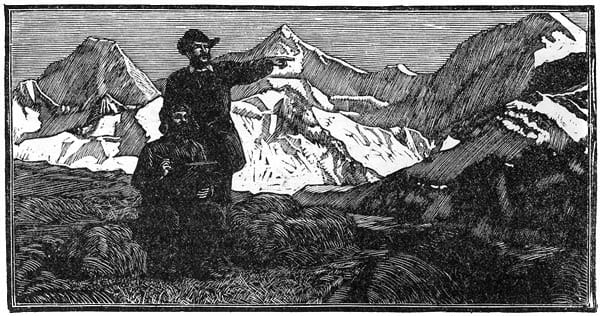
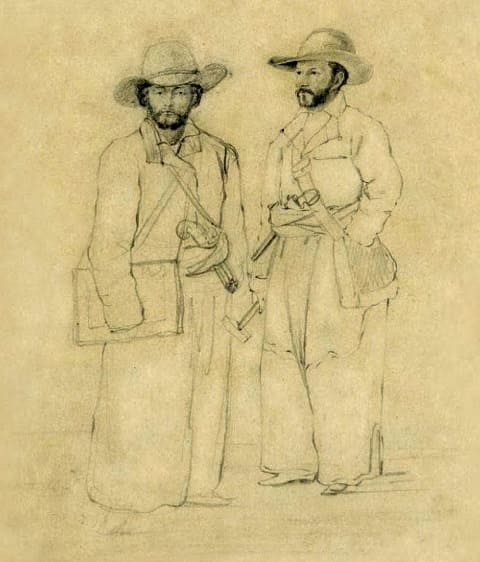
Authority:
Andrey Mikhailov, No. 4 (17604) from 12.01.2013, Express newspaper Vladimir Petrov, local historian.





